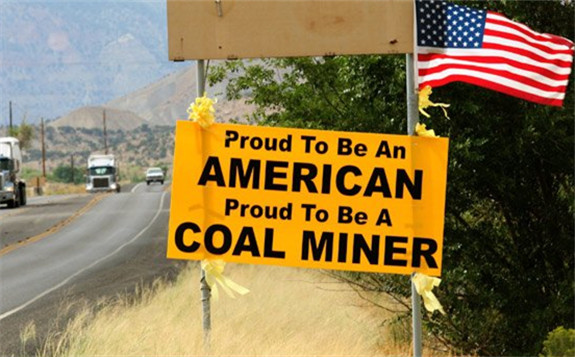The simple laws of economics threaten to doom America's remaining coal power plants.

Wind and solar costs have plunged so rapidly that 74% of the US coal fleet could be phased out for renewable energy -- and still save customers money, according to a report released on Monday by Energy Innovation, a nonpartisan think tank.
That figure of at-risk coal plants in the United States rises to 86% by 2025 as solar and wind costs continue to plunge.The research demonstrates how it's increasingly more expensive to operate existing coal plants than build clean energy alternatives.
"US coal plants are in more danger than ever before," Mike O'Boyle, director of electricity policy at Energy Innovation, told CNN Business. "Nearly three-quarters of US coal plants are already 'zombie coal,' or the walking dead."
That's despite President Donald Trump's promise to revive the beleaguered coal industry. Trump declared the end of the "war on coal" and slashed regulations that clamped down on the emissions from coal-fired power plants.
Late last year, the administration announced plans to reverse an Obama-era coal emissions rule to make it easier to open new coal plants. Trump even appointed Andrew Wheeler, a former coal lobbyist, to lead the EPA.
"Trump administration efforts to cut environmental regulations are too little, too late to save coal," O'Boyle said.
Rust Belt coal plants under siege
The Energy Innovation report found that in 2018, 211 gigawatts of existing US coal capacity -- or 74% of America's fleet -- was at risk from local wind or solar that could more cheaply churn out just as much electricity.
North Carolina, Florida, Georgia and Texas are the US states that have the greatest amount of coal plants at risk from local solar and wind, the analysis found. Energy Innovation defined local as within 35 miles.
By 2025, Midwestern states including Indiana, Michigan, Ohio and Wisconsin are expected to have high amounts of coal capacity under pressure from renewable energy.
Of course, just because it may be economically feasible to shut down a coal plant and replace it with wind or solar, doesn't mean it will happen right away. State regulators must sign off on such decisions. And many power plants will decide to pass the extra costs on to customers.
Moreover, coal is still a major employer in parts of Appalachia, making any shutdown potentially damaging to the local economy.